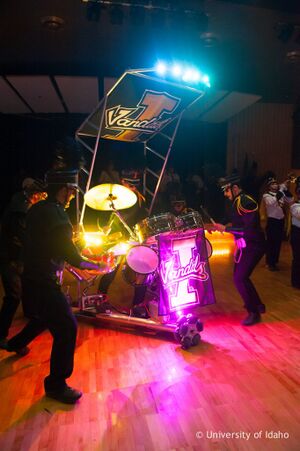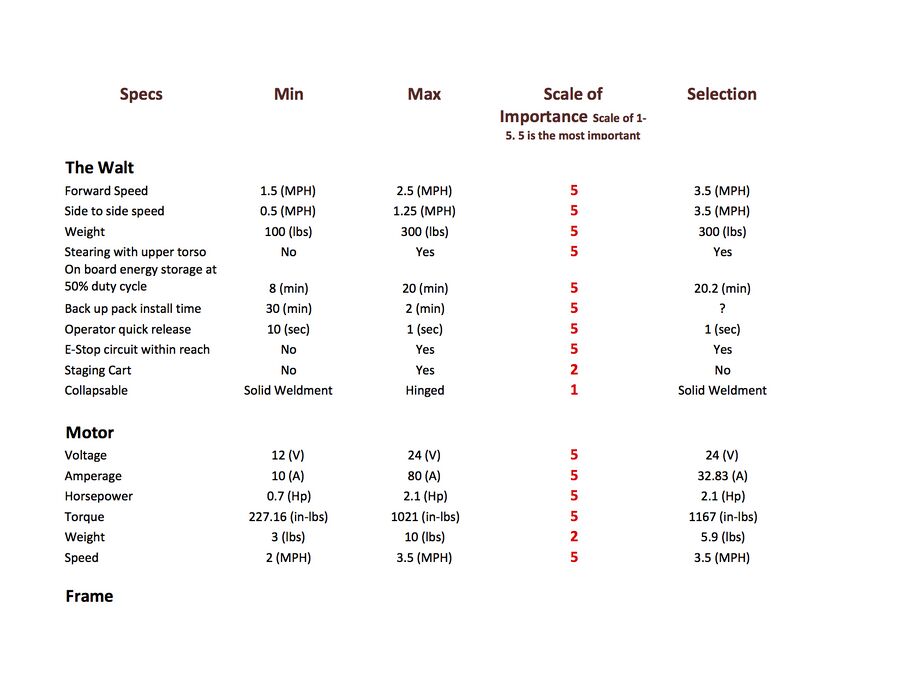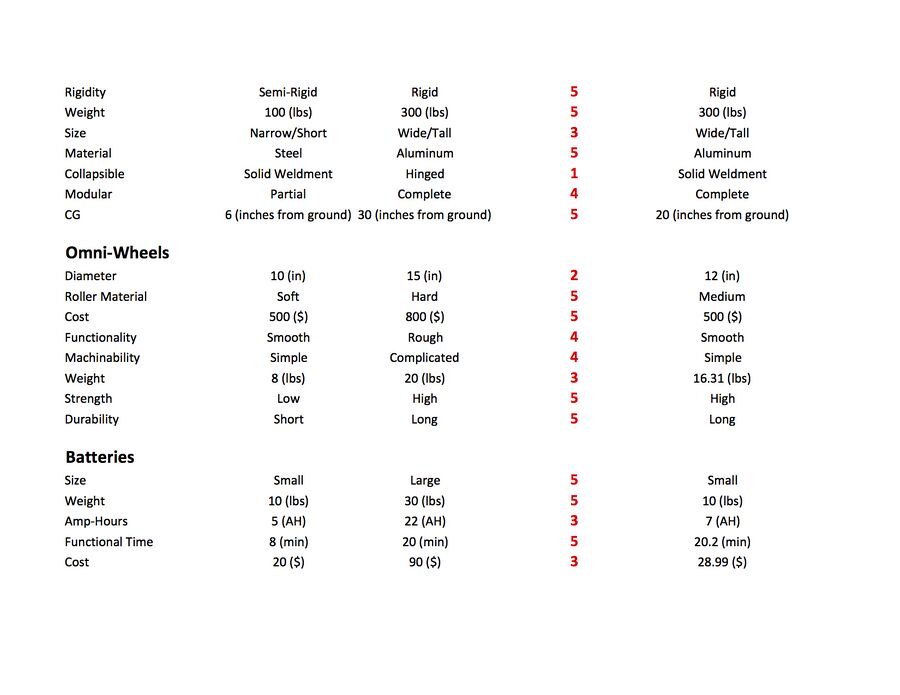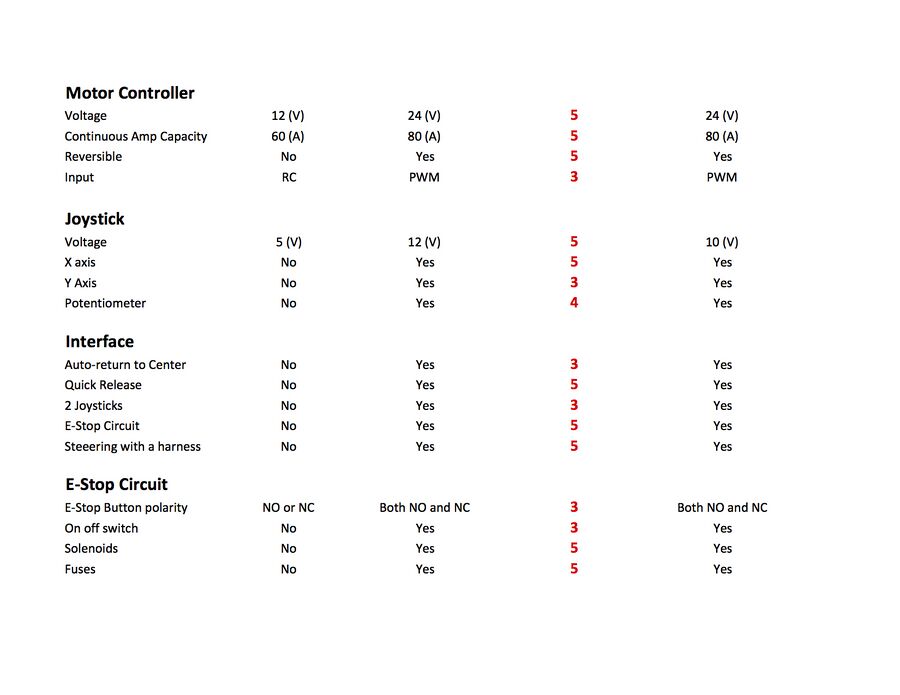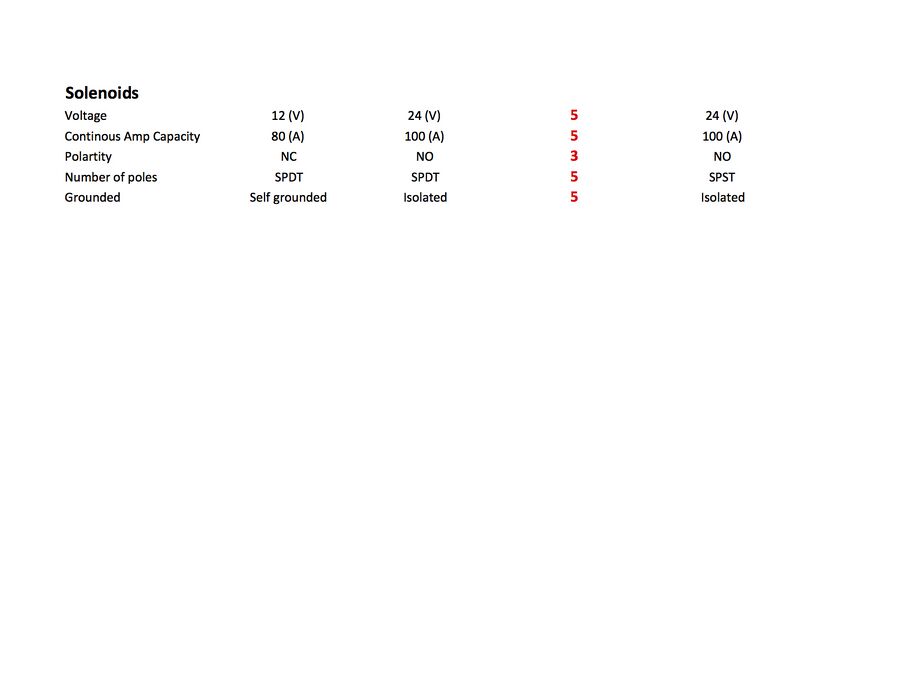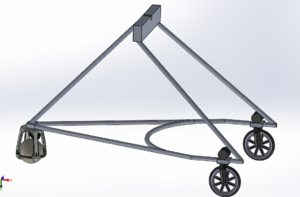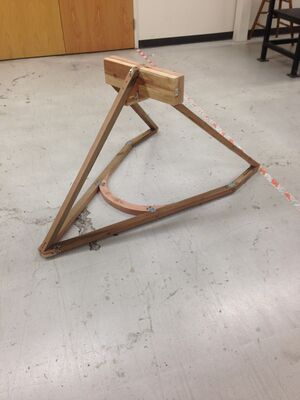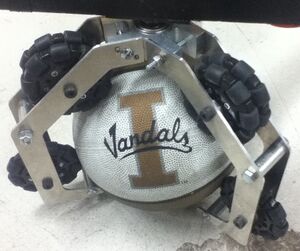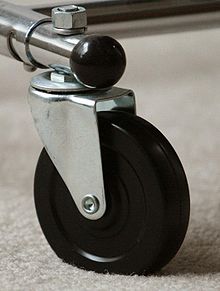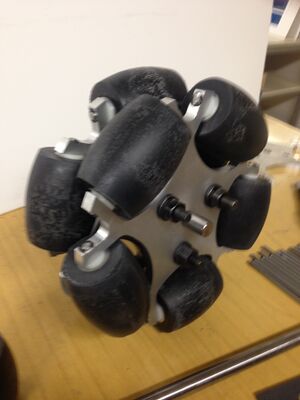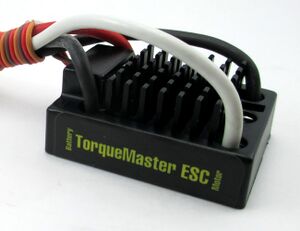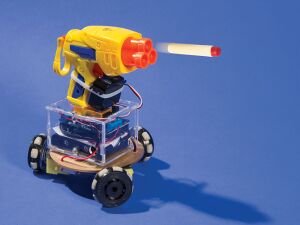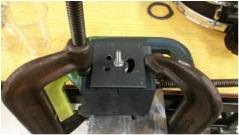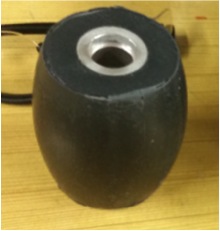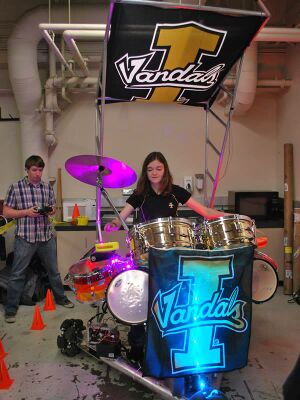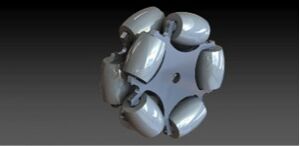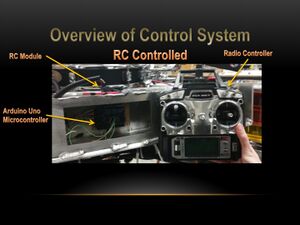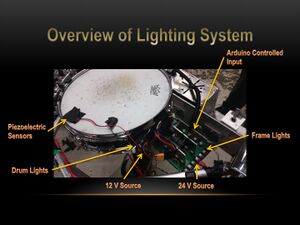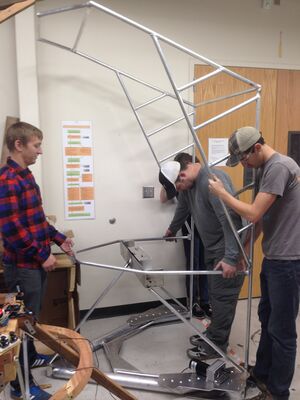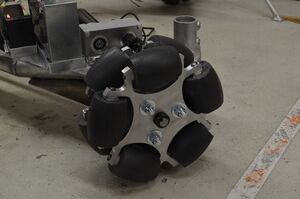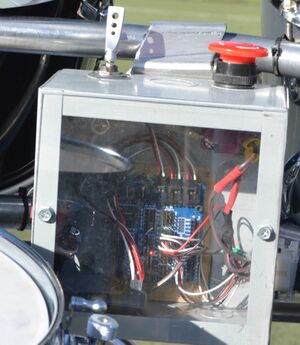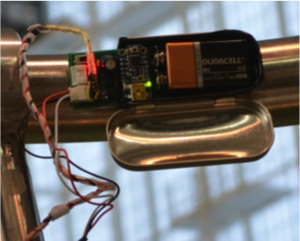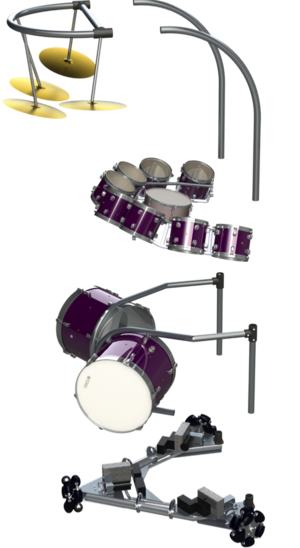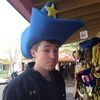BandBeesten Robotic Drumset
| Finale for the final performance of the University of Idaho Vandal Marching Band for 2014
| |
| Sponsors | |
| Team Name | Band-Beesten |
| Duration | Summer - Fall 2014 |
| Faculty Advisers |
|
| Mentor |
|
| Team Members |
|
The Band-Beesten legacy continues as the University of Idaho Department of Mechanical Engineering and the University of Idaho Vandal Marching Band work together to create the ultimate drum machine. The Band-Beesten is a fully powered drum set created to be able to traverse a variety of surfaces such as astroturf, asphalt, and hardwood and be able to carry a load of up to 150 pounds. This year's team completely redesigned the frame, control system, and wheels to be able to reach all of the project goals.
Background
The Band-Beesten project was started in 2011 by Dr. Edwin Odom, Professor of Mechanical Engineering, and Dr. Daniel Bukvich, Professor of Percussion and Music Theory. The goal of their collaboration was to create a full drum set that could easily be played and moved by a single person during marching band performances. The 2014-2015 acedemic year is the 4th consecutive year of the project.
Work in the fall of 2011 consisted of researching ideas for a powered platform to assist in parade and marching band performances. The team worked solely on research for a proof of concept and did not build a physical prototype. For more in depth design details refer to the Team Drum Roll webpage.
The design team of 2012-2013 made progress with the BandBeesten's design. Dan Mathewson, a UI graduate student, designed a robotic power driven front ball wheel to enable the machine to receive commands through the operator's body movements. More information on this design can be found in Dan Mathewson's thesis . The 2012 design team made significant progress in designing a human interface and powered movement for the BandBeesten.
In the 2013-2014 academic year, a new team started designing a BandBeesten design that would be light weight and have low friction wheels. This design relied only on man-power and did not have any assisting motors. The team also produced a marketing video for the UI Marching Band using 3D printed models and a stop-motion video design. More information about this design can be found at their page.
Project Goals
The design team developed a set of design specifications to work towards throughout the year. Each specification is given a weight value from 1 (lowest priority) to 5.5 (highest priority).
Design Specifications
| ' | |
| ' | |
| ' | |
| ' |
Project Learning
Frame
Frame Design
| |
Frame Prototype
|
Wheels
The BandBeesten must be able to be moved in any direction on a moment’s notice to keep up with the marching band’s routine. Its wheels must allow maneuvers such as crab walking and rotation as well as straight motion. Designs considered are Omni-ball wheels, conventional casters, and Omni-wheels.
|
| |
|---|---|
Omni-Ball Wheels
| |
Conventional Casters
| |
Omni-Wheels
|
Motor Controls
To control the power given to each motor, an arduino is used. The arduino sends a signal to separate motor controllers which in turn sends power to each motor. breakers, fuses, and an emergancy stop button have been installed for safety.
|
| |
|---|---|
Motor Controller
| |
RC Controller
| |
RC Omniwheel Robot
|
Wheel Casting
In the latest version of the Band-Beesten, and omni-wheel design is being used. 12" wheels are needed to allow for smooth operation, and as there is no current availability of omni-wheels of this size, the wheels were manufactured in the UI machine shop. These wheels will be able to move in any direction without pivoting, but they require a casting process for the rollers.
|
| |
|---|---|
Render of Designed mold
| |
Mold In Use
| |
Final Mold
|
Fall 2014 Design
With an aluminum frame, the Beest can support more than twice the anticipated payload while weighing less than 250 pounds. To ensure exceptional acceleration with these high payloads, torque is provided by three motors. These motors deliver their power to the ground through an innovative triad of Omni-wheels. To control motion an RC transmitter is used to send signals from a hand-held controller to an Arduino.
| Photo | Overview |
|---|---|
Full Assembly
| |
Omni-Wheel Assembly
| |
Control System
| |
Lighting System
| |
Frame
|
Spring 2015 Design
With a full Beest prototype made by the end of the Fall 2014 semester, the team hit the drawing board again to redesign the upper frame. Leaving the tetrahedral design behind, a more aesthetically pleasing curved frame was chosen. This new frame would be able to support eight 12 inch drums along with four hanging cymbals. The control system was also rethought, allowing the whole receiver system to be held in one small removable box rather than the large center beam used previously.
| Photo | Overview |
|---|---|
Full Assembly
| |
Omni-Wheel Assembly
| |
New Control System
| |
Lighting System
| |
Frame
|
Team Members
| Bio | Discipline | |
|---|---|---|
| Shawn Trimble:
Shawn is looking forward to graduating with his second degree and the end of the semester. He also is excited to work with the team as a graduate mentor this next semester. |
ME | |
| Amanda White:
Amanda hopes to become an Imagineer and work on either the development of rides and attractions or the development of resorts. She enjoys being able to cross disciplines with performances in the arts and in engineering. |
ME | |
| Joe Pratt:
Joe is a senior at the University of Idaho; after graduation he hopes to work in the field of aerodynamics. He enjoys the outdoors and the Oregon Coast. |
ME | |
| Christian O'Bryan:
Christian is a senior at the University of Idaho and will be taking on a full time position at Schweitzer Engineering Laboratories after graduation. He likes long walks on the beach and the smell of the ocean. |
ME | |
| Robyn Vowell:
Robyn is a senior at the University of Idaho and will be working at Tikker Engineering upon graduation. He enjoys watching football and having fun. |
ME | |
| Maddie Brennan:
Maddie Brennan is a senior studying Computer Engineering at the University of Idaho. She also is a three year member of the Sound Of Idaho Vandal Marching Band. |
CompE | |
| Tyler Comstock:
Tyler Comstock comes from a farming background and enjoys tearing things apart to find out how they work. He obtained an associate degree in computerized machining technology from ISU in Pocatello Idaho and is currently attending the University of Idaho for mechanical engineering. |
ME |
Document Archive
2014 Band-BeestenTechnical Presentation Semester 1
2014 Band-Beesten Road Load Model
2014 Band-Beesten Lego Movie Story Board
2014 Band-Beesten DFMEA page 1
2014 Band-Beesten DFMEA page 2
2014 Band-Beesten DFMEA page 3
